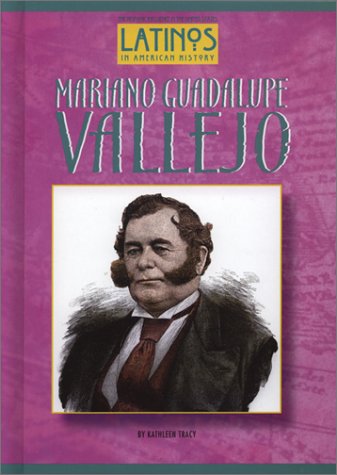-
The California Gold Rush in American History
Linda Jacobs Altman
Library Binding (Enslow Pub Inc, Oct. 1, 1997)Describes adventures and disasters in the lives of people who rushed to the gold mines of California in 1848 and explains how this event sparked the state's development
-
The Settling of St. Augustine
Janet Riehecky
Library Binding (Gareth Stevens Pub Secondary Lib, Dec. 1, 2002)Traces the history of St. Augustine, Florida, from its development as a Spanish colony and military outpost in 1565 through the early eighteenth century, and discusses the impact of colonialization on the native Timucuan Indians. Q
Q
-
The Oregon Trail in American History
Rebecca Stefoff
Library Binding (Enslow Pub Inc, Nov. 1, 1997)Explores the great westward migration on the Oregon Trail in the nineteenth century and the experiences of those who traveled that way
-
Abolitionists and Slave Owners
Jeremy Morlock
Paperback (PowerKids Press, July 15, 2019)The dispute over slavery began before the founding of the United States. Abolitionists saw the ownership of one human being by another as an intolerable evil. Slave owners believed it was essential to their economy and way of life. The struggle between the two shaped the growth and government of the nation. This exciting book shares the views of key figures in their own words. Readers will learn about the many forms the debate took, from bestselling books to bloody battles. Interesting fact boxes and historical images bring the issues into clear focus for readers. R
R
-
The Salem Witchcraft Trials in American History
David K. Fremon
Library Binding (Enslow Pub Inc, April 1, 1999)Discusses the issues and controversy surrounding the trials, highlighting possible causes and the key figures
-
African-American History from Emancipation to Today: Rising Above the Ashes of Slavery
Ann Byers, Henry Louis Gates
Library Binding (Enslow Pub Inc, Oct. 1, 2004)Provides an overview of the significant people, places, and events associated with the end of slavery and the continuing struggle for equal rights in America.
-
The Lincoln Assassination in American History
Robert Somerlott
Library Binding (Enslow Pub Inc, April 1, 1998)Discusses the people and events connected with the assassination of Abraham Lincoln, as well as its effect on the history of the United States
-
Mariano Guadalupe Vallejo
Kathleen Tracy
Library Binding (Mitchell Lane Pub Inc, Oct. 1, 2002)Profiles the man called one of California's most important founding fathers, who fought for the rights of the Native Americans there while paving the way for California to join the United States. P
P
-
Arlington National Cemetery
Catherine Reef
Library Binding (Dillon Pr, Nov. 1, 1991)Examines the history and current activities of the national burial place and shrine in Arlington, Virginia N
N
-
The Six Nations of New York: The 1892 United States Extra Census Bulletin
Henry B. Carrington, Robert W. Venables
Paperback (Cornell University Press, Aug. 15, 1996)In 1892 the U.S. Census Printing Office published a report on the Six Nations in New York State which collected evidence still used today by the Six Nations to defend their legal rights. The 1892 census purported to be an objective report on the condition of the Iroquois. General Henry B. Carrington, special agent, U.S. Army (retired), was "to spend months among the Indians making careful observations respecting their various political, religious, and social meetings, their homes, health, and habits." The study, carried out at the time of the battle at Wounded Knee, was the first step in the government's plan to eliminate reservations: once land was privately held by individual Native Americans, it could be taxed. The census presented ample evidence of the Iroquois success in balancing their heritage with contemporary challenges and opportunities. The agents misconstrued their subjects' willingness to assimilate but also recognized that legally the Indians could become U.S. citizens only by renouncing their tribes. The report tried to assess―from statistics and individual accounts of traditional religious beliefs, practices, and ceremonies; of social practices and moral values; of health, property, and education―whether the Iroquois could be assimilated. In the process, it accumulated data, fascinating details, and photographs that bring history alive a century later.
-
The Trail of Tears: Removal in the South
John P Bowes, Associate Professor of History Paul C Rosier
Library Binding (Chelsea House Publications, June 1, 2007)In 1830, Congress passed the Indian Removal Act, which authorized President Andrew Jackson to move eastern Indian tribes west of the Mississippi River to Indian Territory. Often solely associated with the Cherokee, the Trail of Tears more accurately describes the forced removal of the Five Civilized Tribes, which in addition to the Cherokee includes the Chickasaw, Choctaw, Creek, and Seminole. This book is an insightful and honest exploration of this dark chapter in Native American history.
-
The Triangle Shirtwaist Fire and Sweatshop Reform in American History
Suzanne Lieurance
Library Binding (Enslow Pub Inc, Feb. 1, 2003)Explores the people and events connected with the 1911 fire in a New York City sewing factory that killed 146 people and led to reforms in legislation regarding workplace safety. W
W